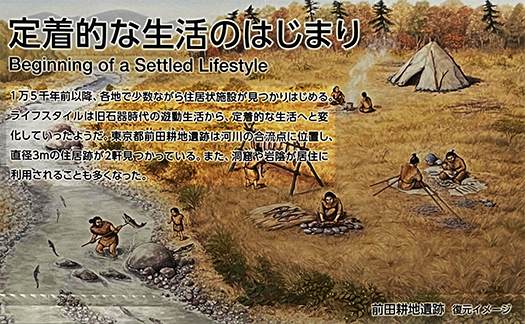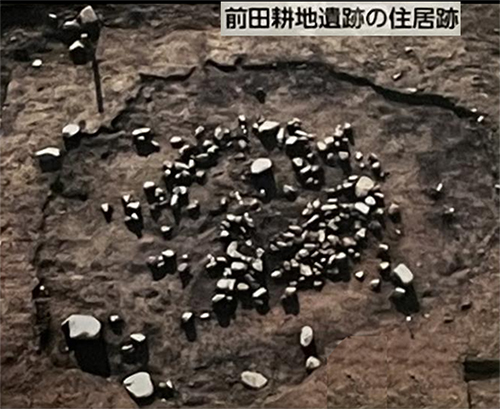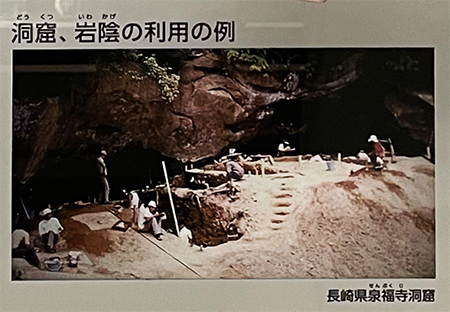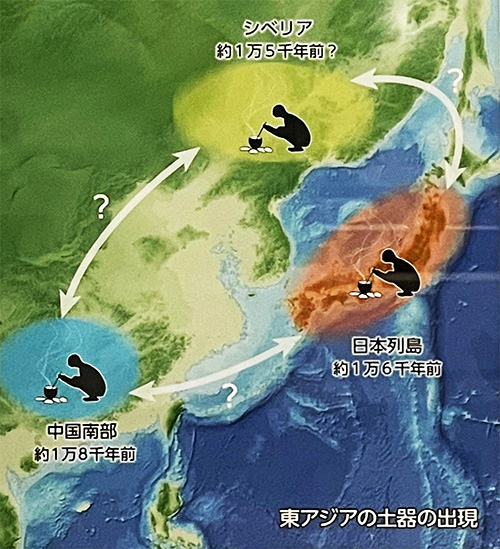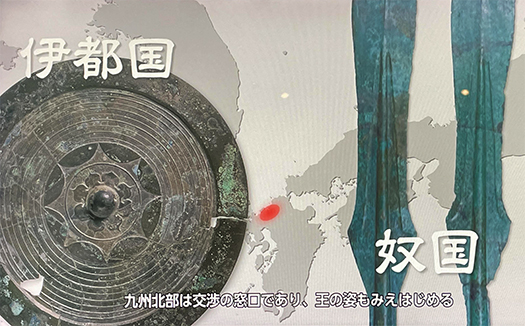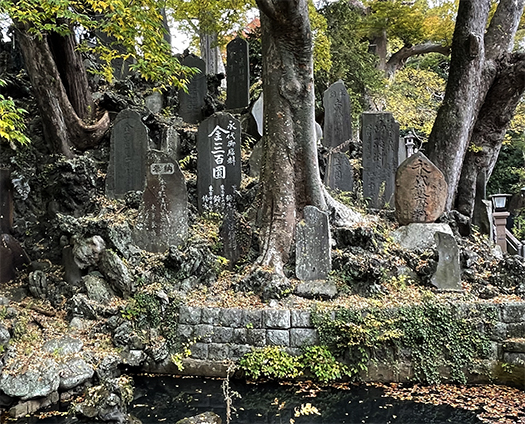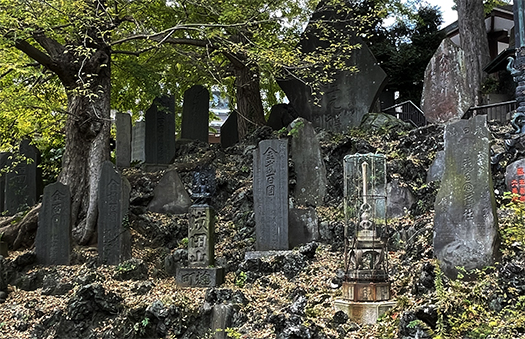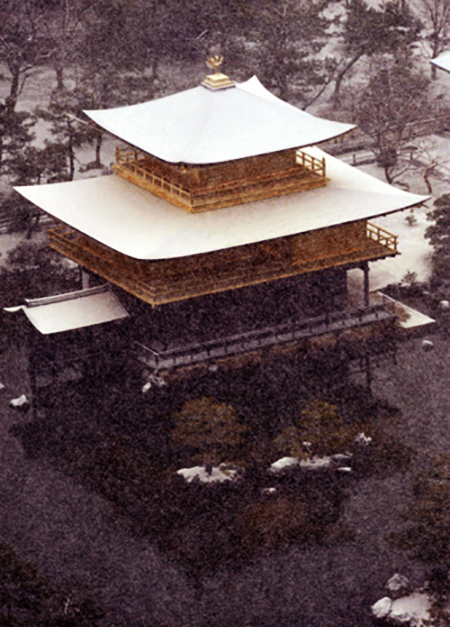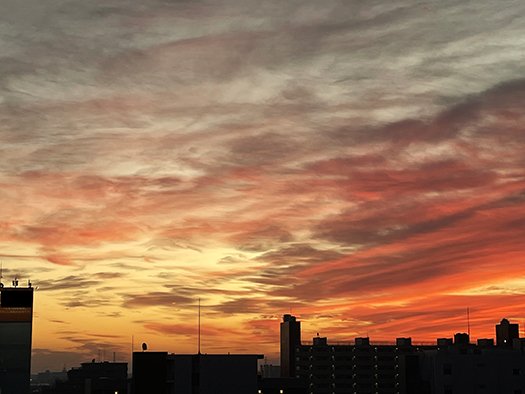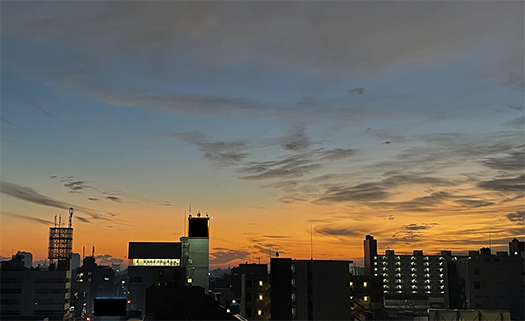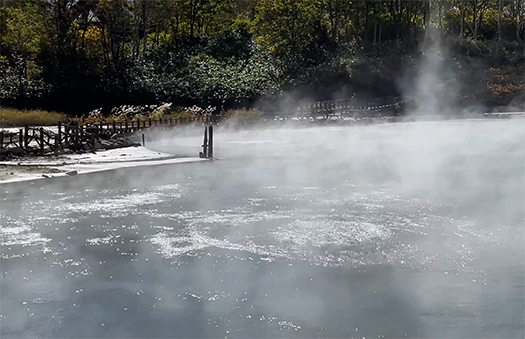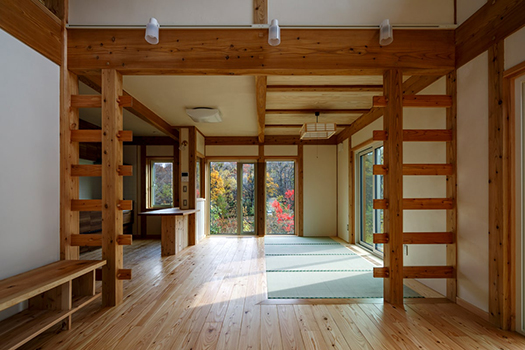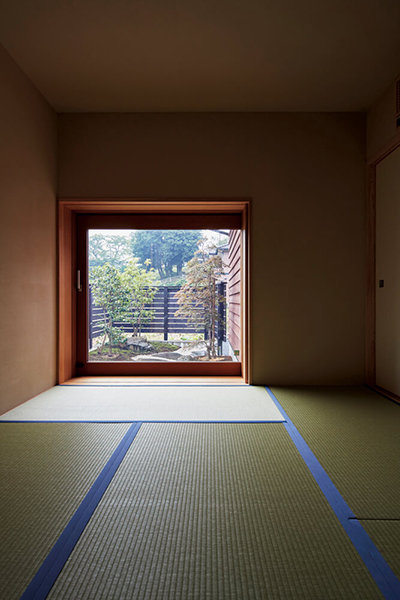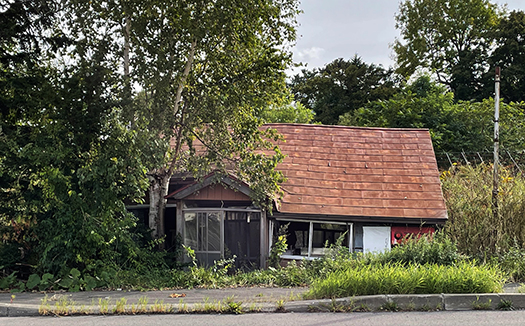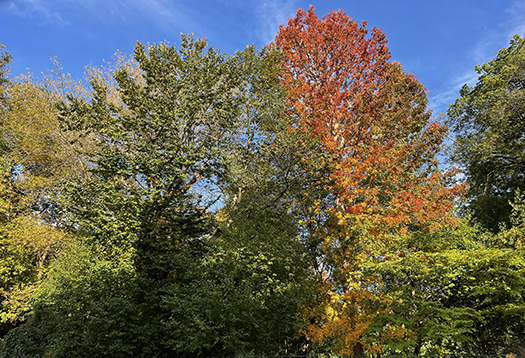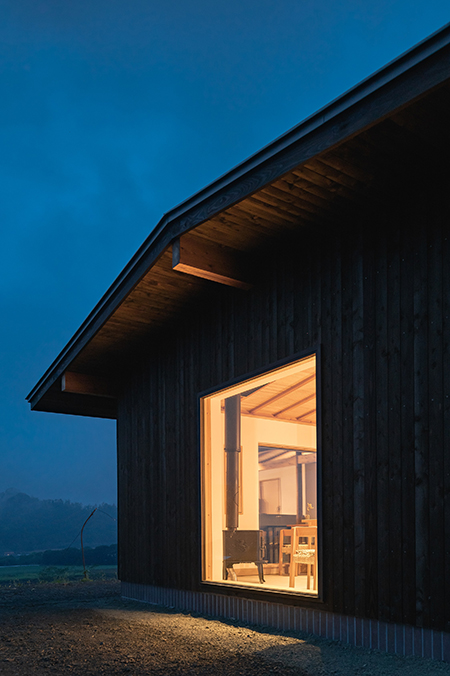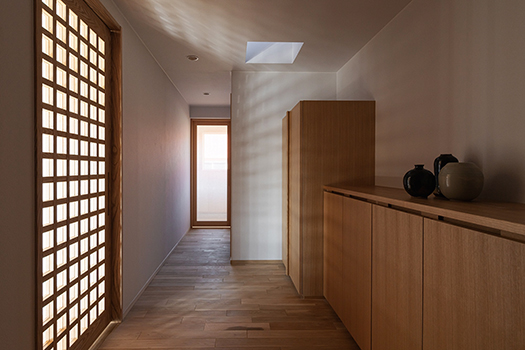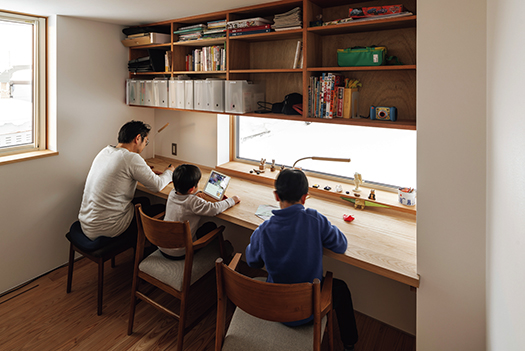
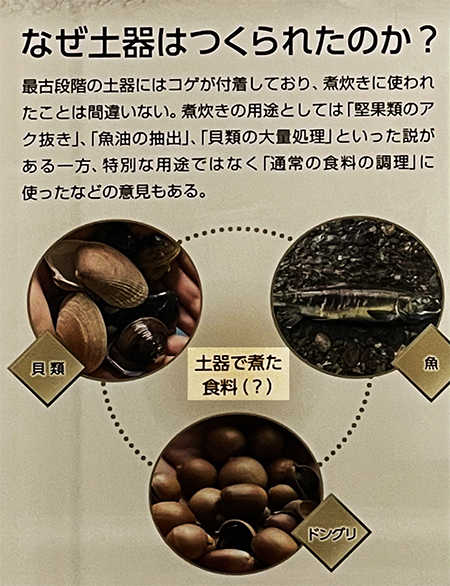
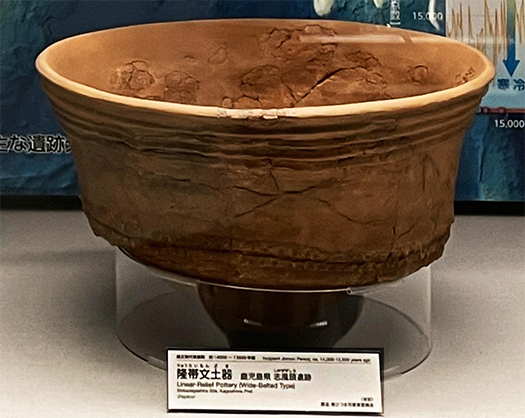
地球温暖化が進み縄文海進によって海水面が上昇して
高温多湿的気候条件が日本列島に出現して、同時に土器文化が始まった。
大陸の東アジア南北でもほぼ同時期に土器がはじまる。
たぶんこのことは食に関する大変動があったことの反映に違いない。
そこで考えられるのは2つ。
ひとつは縄文海進によって落葉広葉樹の森が大きく広がって
そこから堅果類・ドングリとか多様な木の実が供給されたこと。
そしてもうひとつが広がってきた海やそこに流れ込む河川流域で
魚類という無尽蔵とも思える食糧資源が現実化したこと。
この2つの食料源が列島人類に提供されたことで
それへの食文化対応として「調理」という概念が成長したのではないか。
旧石器時代には狩猟採集生活スタイルとして獲物が獲得されると
「ばっかり食」となってしまい、栄養バランスはよくはない。
一般的に旧石器の寿命は縄文の定住にくらべ短命だったとされるのには
この栄養バランスの問題があったのではないか。
落葉照葉樹林から供給される植物性栄養源が栄養バランスを劇的に変容した。
もちろん落葉照葉樹林の広大な広がりによって
煮炊きに使用するエネルギー源として薪木が豊富に獲得可能になったことも
人類史的に大きかったように思われます。
どうもわたしには、こういう推論が魅力的に思える。
動物性タンパクは主に魚類がその用を担い、
一方で落葉照葉樹林が供給する植物性栄養源が出会う機会として
縄文土器がその調理の幅の拡大の役割を果たしていった。
陸生動物の肉食の文化としては基本的にはステーキが想像されるけれど、
海生動物・魚類については焼くほかに「煮る」食文化が発達したのではないか。
日本食に根強い「鍋食文化」が広範に広がった。
水辺という動物性と植物性の両方の食料源の接点で定住が可能になった。
こういう想像がいちばんムリのない解釈だと思えます。
とくに日本列島は暖流と寒流がせめぎ合う独特の地勢環境であり
また落葉照葉樹林からにじみ出す栄養源が河川を通じて周辺海域に
「海の恵み」の豊かさも育んだ。
地球環境の中でも特異的なこういう環境が独特の食文化を形成した。
大陸的生活環境に対して、日本列島はウオーターフロントという
暮らしやすさの面積的広がりはまったく優越した環境だったと思える。
居住がしやすい環境という意味合いからすると
国土面積とはまったく違った、海・水辺と後背の落葉照葉樹林という生活圏の
総合的居住可能面積では、日本列島は相当の豊かさを持っていた。
こういった環境が日本人の精神性の基底部分に強い影響を与えた。
海彦山彦という精神文化も揺籃したように思えてならない。
English version⬇
Are Earthenware the Founder of Food Culture? The 37,000-Year History of the Japanese Archipelago -13
The Jomon pottery culture was established in an environment with food resources such as the sea, waterfront, and deciduous evergreen forests in the background. The Jomon earthenware culture was established in this environment of food resources. This was the cradle of Japanese food and pot food culture. The Jomon Earthenware Culture
As global warming progressed and sea levels rose with the Jomon sea advance, hot and humid climatic conditions emerged in the Japanese archipelago.
The hot and humid climatic conditions in the Japanese archipelago led to the simultaneous emergence of earthenware culture.
Earthenware culture also began in the north and south of East Asia at about the same time.
This probably reflects the fact that there was a major upheaval in the food culture.
There are two possibilities.
The first is that the Jomon period saw the spread of deciduous broad-leaved forests, and the second is that the Jomon period saw the spread of hard fruits, acorns, and other edible plants.
The first is that the Jomon sea expansion greatly expanded deciduous broadleaf forests, which supplied a variety of nuts, such as hard fruits and acorns.
The other is that the sea and the rivers that flowed into it provided a seemingly inexhaustible supply of fish.
The other is the seemingly inexhaustible food resource of fish in the expanding oceans and the river basins that flow into them.
These two food sources were provided to the human population of the archipelago.
The concept of “cooking” may have grown as a food culture response to these two food sources.
In the Paleolithic period, when prey was acquired as part of the hunter-gatherer lifestyle
The Paleolithic lifestyle was a hunter-gatherer style, and when prey was acquired, it became an all-or-nothing diet, which did not have good nutritional balance.
It is generally believed that the life span of Paleolithic people was shorter than that of Jomon people.
This nutritional balance may have been the reason for the shorter lifespan of Paleolithic artifacts compared to Jomon settlements.
The plant source of nutrients supplied by deciduous evergreen forests dramatically altered the nutritional balance.
Of course, the vast expanse of deciduous evergreen forests
The abundance of firewood as a source of energy for cooking seems to have been a major factor in human history.
This seems to have been a major factor in human history.
This kind of reasoning seems appealing to me.
Fish are the main source of animal protein, while deciduous forests are the main source.
On the other hand, plant sources of nutrients provided by deciduous evergreen forests
Jomon pottery played a role in expanding the range of cooking.
While steaks are the basic meat of terrestrial animal cultures, the Jomon pottery was used to prepare a wide range of foods.
However, for marine animals and fish, in addition to grilling, a “boiling” food culture may have developed.
The “nabe food culture,” which is deeply rooted in Japanese cuisine, spread widely.
The waterside, a point of contact between animal and vegetable food sources, made it possible to settle down.
This seems to be the most reasonable interpretation.
In particular, the Japanese archipelago has a unique geographical environment where warm and cold currents converge.
In addition, nutrients oozing from deciduous evergreen forests are distributed through rivers to the surrounding seas, and the richness of the “bounty of the sea” has been nurtured.
The Japanese archipelago is a unique environment in the global environment.
This unique environment has created a unique food culture.
In contrast to continental living environments, the Japanese archipelago is a waterfront area.
The Japanese archipelago is a waterfront environment, which is superior to continental environments in terms of the area it covers for ease of living.
In terms of a habitable environment, the Japanese archipelago is different from the land area.
The total habitable area of the living area of the sea, waterfront, and deciduous evergreen forests in the hinterland is completely different from the land area of the country.
The Japanese archipelago was quite rich in terms of the total habitable area of the sea, waterfront, and deciduous foliage forests in the hinterland.
This environment had a strong influence on the base of Japanese people’s spirituality.
It seems that the spiritual culture of “Umihiko Yamahiko” was also cradled in this environment.
Posted on 11月 13th, 2022 by 三木 奎吾
Filed under: おとこの料理&食, 歴史探訪 | No Comments »


